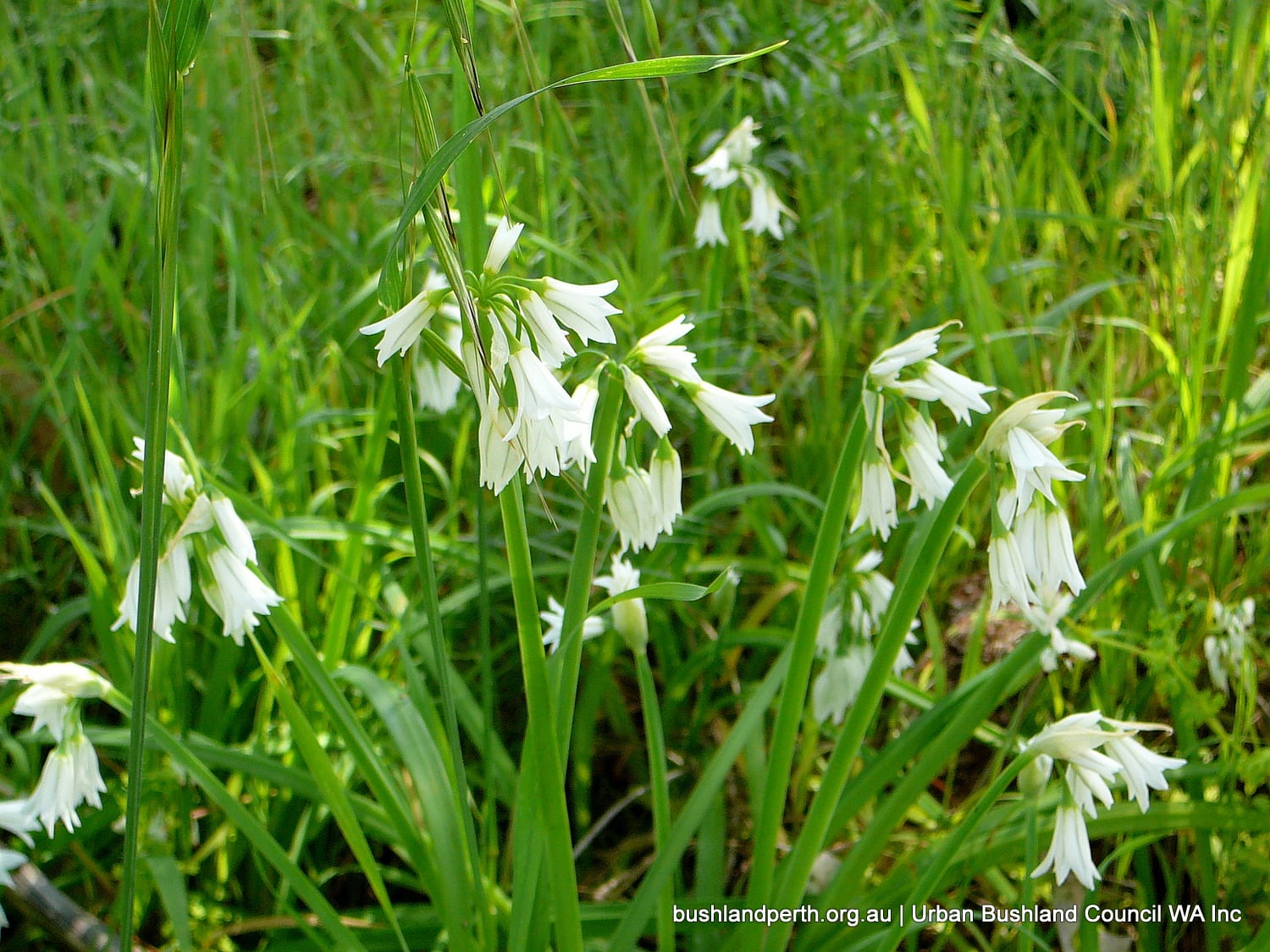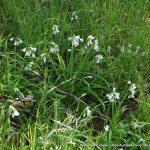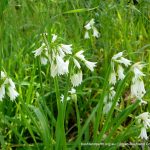Three-cornered Garlic

Common name
Three-cornered Garlic
Scientific Name
Allium triquetrum
Type of plant
Bulbs or Corms
About this weed
This perennial herb is originally from Europe and North Africa and is a member of the ‘Onion’ family. It is another garden escapee and has a distinctive three-cornered stem – hence the common name. By 1909 it had become naturalised in South Australia.
Description
Three-cornered Garlic is another of the perennial, weedy bulbs. It can grow to about 0.3 m high and produces drooping, white bell shaped flowers that are held aloft on a stalk. It flowers from late winter to early spring. Reproduction is by offsets and seed and then dispersed by water, soil and possibly ants. The time to first flowering is 2 years and the seedbank persists for 1 to 5 years. This bulb generally survives fire.
Impact on Bushland
If left will spread into bushland and compete with native plant communities. It has the potential to become a serious bushland weed as it can soon dominate the ground layer.
Location
It likes moist soils and is generally found in the wetter areas of the South-West Province usually around settled areas, creeklines and granite rocks.
Priority for removal
High: major threat to the conservation values in areas of higher rainfall in the South-West Province.
Management (hand)
Not available – but care should be taken if trying to remove plants manually to ensure all bulbs are removed.
Management (herbicide)
Spot spray metsulfuron methyl 0.2 g/15 L + Pulse® (or 2.5 – 5g /ha + Pulse®) or 2,2 DPA 5 g/L+ Pulse®. Apply just on flowering at bulb exhaustion. Optimum spraying months are June and July. Read the manufacturers’ labels and material safety data sheets before using herbicides.
Flowering month/s
August, September, October
Flower colour/s
White
Information source
https://florabase.dpaw.wa.gov.au/browse/profile/1378
Additional information
https://florabase.dpaw.wa.gov.au/weeds/swanweeds/
Hussey, B.M.J., Keighery, G.J., Dodd, J., Lloyd, S.G. and Cousens, R.D. (2007) Western weeds. A guide to the weeds of Western Australia, Second Edition, The Weeds Society of Western Australia, Victoria Park, Western Australia.


